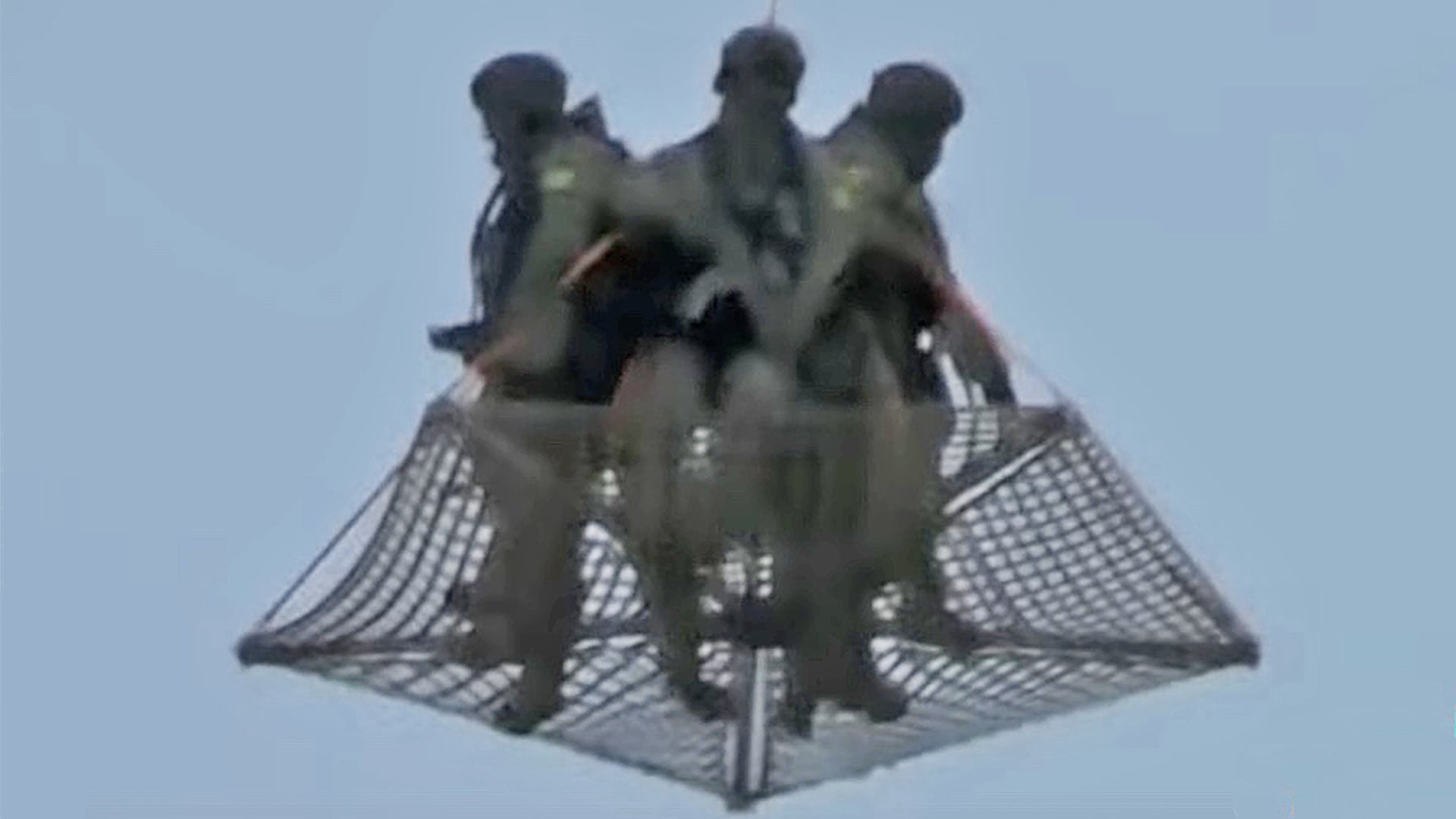There was a flurry of videos and photos coming out of Russia on Friday showing what appeared to be people standing on an octagon-shaped disk-like apparatus that was attached to a Mi-8 helicopter via a long line. The helicopter was accompanied by at least one other Mi-8 as they descended toward the Kremlin. Although helicopters are a constant presence over Moscow, and especially near the Kremlin which has large landing pads that often receive the Mi-8MTIs that ferry President Putin around, as well as far more exotic government choppers, there usually aren’t people performing what appears to be a grand circus act of sorts hanging below them. The reality is that what people actually saw was Russia’s elite counter-terror operators training with a device known in the special operations community as Airborne Tactical Extraction Platform, or AirTEP for short.


The AirTEP system is used to rapidly infiltrate and exfiltrate personnel from tight spots where helicopters can’t land. With the right pilot, the platform can be set down quickly even on relatively tiny surfaces. After touching down, the operators onboard quickly disconnect and step off the platform so the helicopter can quickly fly away. The opposite of this operation is used for extraction.
There are a number of advantages to this technique over fast roping, using ladders or winches, or the SPIE method when used in certain circumstances. Speed of action is this system’s primary feature and commandos can shoulder their weapons effectively during the terminal stages of a transport operation. Combining tactics, such as using fast roping for insertion and AirTEP for extraction, provides enhanced flexibility for the most challenging mission sets.
Capewell Aerial Systems, who sells the AirTEP system, describes its utility as such:
The fastest way up and out! The innovative AirTEP Tactical Extraction Platform is ideal for inserting or extracting personnel via helicopter from land or sea environments—including confined areas. AirTEP is ideal for use in natural disasters such as floods, hurricanes, forest fires–or any situation where multiple rescues are required concurrently. AirTEP holds up to ten people (3500 lbs).
The AirTEP is 9.5 feet in diameter, weighs 110lbs, and is rated for airspeeds up to 100 knots while fully loaded. Escape International, a French firm, appears to be the designer of the system.

Quite frankly, I have only heard of this system being used by counter-terrorism, hostage rescue, and other high-end special operations units, not by search and rescue personnel or for other applications such as delivering workers to an oil platform, but that doesn’t mean it isn’t in service in those roles. Even for tactical uses, these systems aren’t extremely prevalent around the globe.
France’s GIGN is maybe the most visible user of the system, as well as Germany’s GSG-9. Jordan’s special operations forces have also been seen using the system before. The SAS and America’s elite counter-terror units also have the system in their inventories supposedly, but it’s unclear if they train with it regularly or not. There are other special operations and counter-terror unit customers, but sometimes unique capabilities like this aren’t really publicized heavily. They may show up in live demonstrations from time to time, though.

The system shown in the imagery from Russia could have been previously imported or it could be an indigenous version of the AirTEP that has appeared in a number of photos in the past. Russian special operations and security forces have moved to adopt western tactics and gear in recent years, so the use of this system, whether imported on not, isn’t that surprising.

As for why this was happening, well there may have been some turbulence from within Russia’s intelligence services as of late, but there is no indication that the recent appearance of commandos whizzing over the Russian capital has anything to do with that. Instead, the spectacle was surely part of a training operation that prepares Russian counter-terror teams to quickly respond in a crisis.
Clearly, Russia’s top leadership and landmarks that represent the Russian state are the highest-profile targets for terrorists to go after, so training in and around the Kremlin makes a lot of sense. Beyond that, drilling for operations in urban terrain is something that simply can’t be replicated to a high degree of fidelity even in purpose-built training areas. So actually giving helicopter crews and commandos, and everyone who supports their direct action activities, real-life training where the worst of events could come to pass is of extremely high value.

The U.S. is no different than Russia in this regard. This particular assault method may not be that popular among counter-terror units here in the United States, but using helicopters to shuffle around the huge cities and quickly assault targets is. These types of drills occur regularly in metropolitan areas across the U.S. and usually drum up a lot of confusion and misplaced fear in the process. Even training in dense areas for the rapid extraction of the highest ranking officials in the land occurs, from across Washington DC to Midtown Manhattan.

If anything else, this display offered a little peek into how the Russian security apparatus could respond to a major terrorist act or hostage crisis in Moscow.
Regardless, that must be one hell of a rush riding a flying disk through a dense city packed with tall buildings and iconic architecture at 115 miles an hour. Doing it at night must be a whole other thrill altogether.
Contact the author: Tyler@thedrive.com
